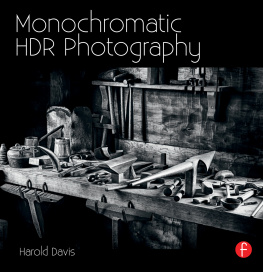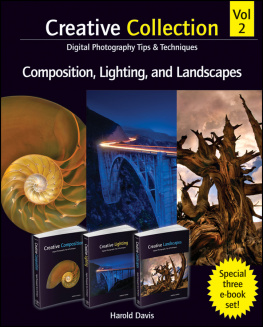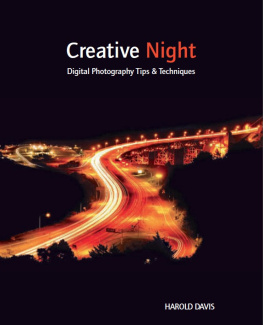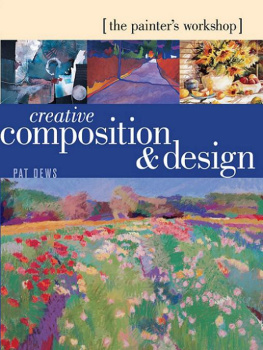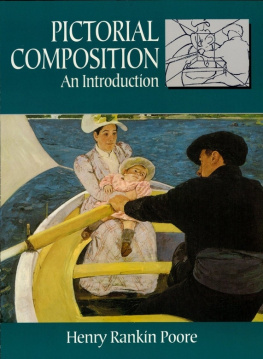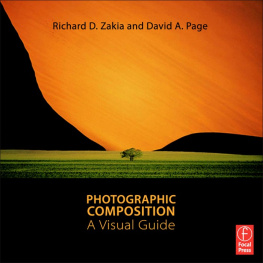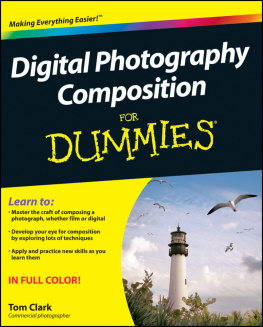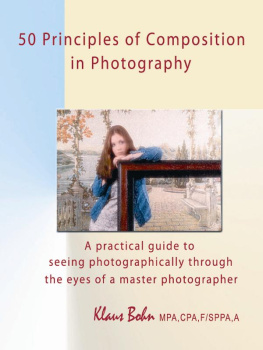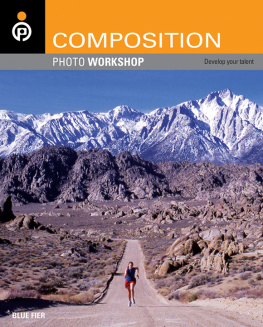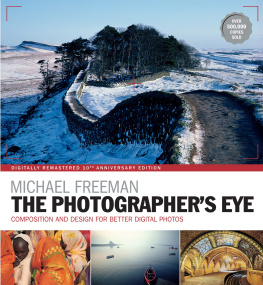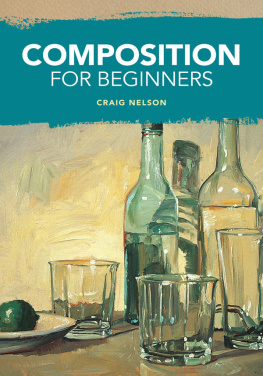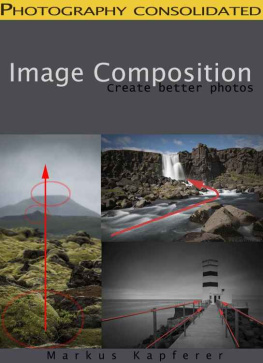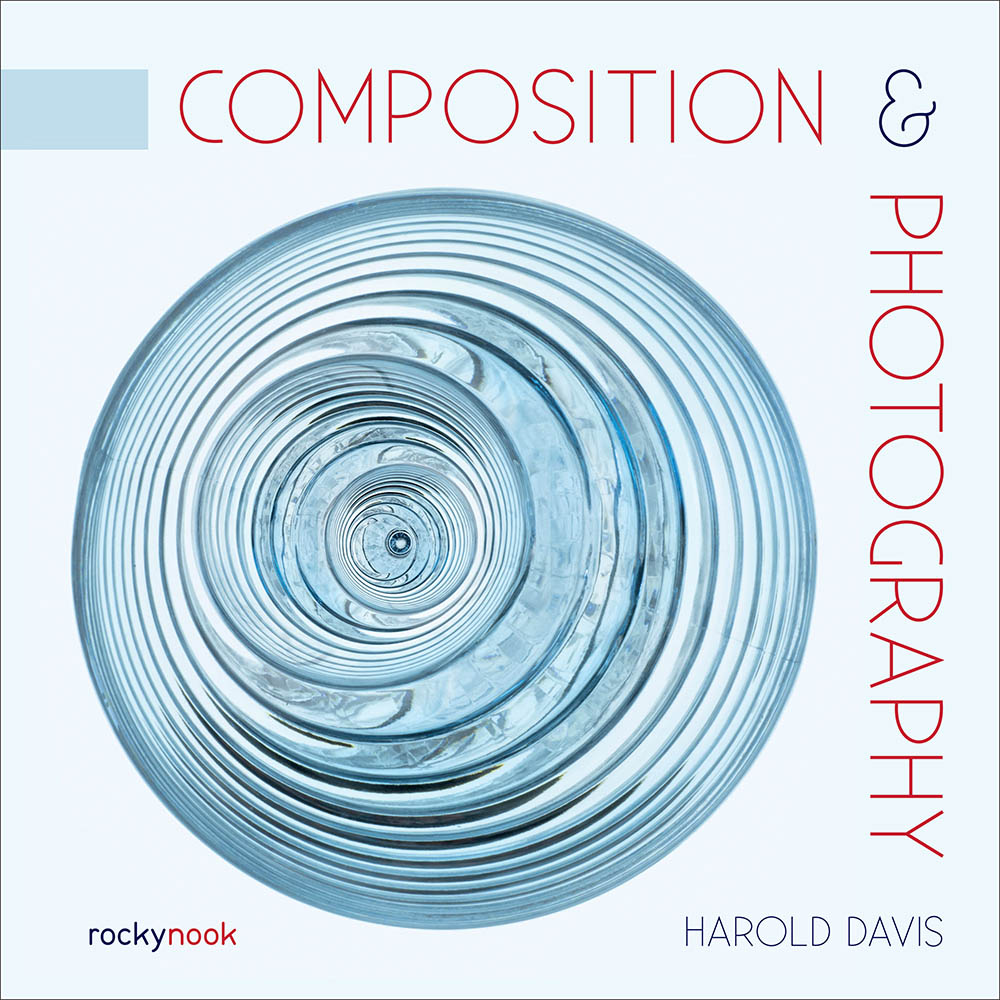Harold Davis - Composition & Photography: Working with Photography Using Design Concepts
Here you can read online Harold Davis - Composition & Photography: Working with Photography Using Design Concepts full text of the book (entire story) in english for free. Download pdf and epub, get meaning, cover and reviews about this ebook. year: 2022, publisher: Rocky Nook, genre: Art. Description of the work, (preface) as well as reviews are available. Best literature library LitArk.com created for fans of good reading and offers a wide selection of genres:
Romance novel
Science fiction
Adventure
Detective
Science
History
Home and family
Prose
Art
Politics
Computer
Non-fiction
Religion
Business
Children
Humor
Choose a favorite category and find really read worthwhile books. Enjoy immersion in the world of imagination, feel the emotions of the characters or learn something new for yourself, make an fascinating discovery.

- Book:Composition & Photography: Working with Photography Using Design Concepts
- Author:
- Publisher:Rocky Nook
- Genre:
- Year:2022
- Rating:5 / 5
- Favourites:Add to favourites
- Your mark:
Composition & Photography: Working with Photography Using Design Concepts: summary, description and annotation
We offer to read an annotation, description, summary or preface (depends on what the author of the book "Composition & Photography: Working with Photography Using Design Concepts" wrote himself). If you haven't found the necessary information about the book — write in the comments, we will try to find it.
Own composition, use composition, and make composition your own in your photographs!
Of all the magical elixirs that make up a successful photograph, composition is perhaps the most fundamental, and at the same time the most elusive. What makes a composition good? Its hard to define exactly, but we instinctively recognize good composition when we see it. There is an undeniable emotional response when a composition resonates with and complements the subject matter of an image.
But traditional attempts to define good composition and to pass on rules for good compositional construction are often doomed to failure. The truth is, there are no hard and fast rules. Rules eliminate experimentation and spontaneity, which are crucial for creating compelling, dynamic, and exciting compositions. The best compositions contain an element of the unexpected. Expect the unexpected! is perhaps the only viable rule of composition. To create exciting compositions, you must have a willingness to embrace serendipity and change as part of your artistic practice. After all, composition is a process, not a result.
In Composition & Photography, photographer and bestselling author Harold Davis teaches you how to perceive patterns and abstractions and incorporate them into your image-making process. If one of the goals of photography is to show viewers things that are new, or things they havent seen before, or things they have seen many times but need to see anew, then its with the thoughtful and considered use of composition that you do that.
In this book, youll learn how to reduce your subject matter to the fundamentals, and to show familiar subjects in unfamiliar, novel ways. Harold covers topics and themes such as:
- Lines and circles
- Rectangles
- Combinations
- Repetition
- Symmetry and asymmetry
- Abstraction
- Entering and exiting
- Vanishing points and perspective
- Emphasis
- Designing within a frame
- Creating order from chaos
Composition & Photography will help you find the tools and visual vocabulary to creatively design your photographs. Regardless of the genre and kind of photography you practice, youll learn to create powerful compositions that incorporate structure and form into your work in ways that best support your images. Along the way, Harold shows and discusses his own work relating to each compositional element or theme hes exploring. And featured throughout the book are exercises about flexibility and process, designed to spur your creativity and help you begin an internal creative discussion.
My goal as a photography teacher and writer about photography is to inspire and to help you become the best and most creative photographer and image-maker that you can be.
Harold Davis
Harold Davis is a force of naturea man of astonishing eclectic skills and accomplishments.
Rangefinder Magazine
Harold Davis: author's other books
Who wrote Composition & Photography: Working with Photography Using Design Concepts? Find out the surname, the name of the author of the book and a list of all author's works by series.



